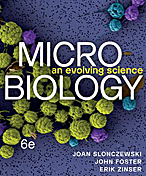Pseudoxanthomonas winnipegensis: Difference between revisions
| Line 51: | Line 51: | ||
==References== | ==References== | ||
[ | [Bernard, K. A., Vachon, A., Pacheco, A. L., Burdz, T., Wiebe, D., Beniac, D. R., Hiebert, S. L., Booth, T., Doyle, D. A., Lawson, P., & Bernier, A. M. (2020). Pseudoxanthomonas winnipegensis sp. nov., derived from human clinical materials and recovered from cystic fibrosis and other patient types in Canada, and emendation of Pseudoxanthomonas spadix Young et al. 2007. International journal of systematic and evolutionary microbiology, 70(12), 6313–6322. https://doi.org/10.1099/ijsem.0.004533.] | ||
==Author== | ==Author== | ||
Revision as of 16:43, 16 November 2022
Classification
Domain;Bacteria Phylum;Pseudomonadota Class;Gammaproteobacteria Order;Xanthomonadales Family; Xanthomonadaceae
Species
|
NCBI: [1] |
Pseudoxanthomonas
Description and Significance
Pseudoxanthomonas winnipegensis is a gram negative bacteria. This species obtains the bacillus shape and has a yellowish pigment. Pseudoxanthomonas winnipegensis was derived water, plants or contaminated soils. Recent studies recovered the bacteria from human clinical materials and was recently recovered from cystic fibrosis patients. Until recently, Pseudoxanthomonas species were only identifiable at the genus level. New gene sequencing improvements have allowed for the identification of species within the genus.
Genome Structure
Specific strains of this bacteria were studied by whole genome sequencing which used average nucleotide identity, DNA-DNA hybridization, amino acid identity, core genome and nucleotide analyses, biochemical and cellular fatty acid analysis and antimicrobial susceptibility testing. Pseudoxanthomonas winnipegenesis structure was investigated using scanning microscopes and transmission electron microscopes. The bacteria was found to be a gram-negative bacilli. Genome sequencing was analyzed using 16S rRNA. Findings showed the bacteria had a average genome size ranging from 4.36 to 4.73 Mb. The genome also has an average G+C content of 69.12 mol%. Additionally, genome sequencing found Pseudoxanthomonas winnipegenesis has a circular chromosomal with 4,505,034 bases, and a CDS of 4077.
Cell Structure, Metabolism and Life Cycle
Interesting features of cell structure; how it gains energy; what important molecules it produces.
Ecology and Pathogenesis
Habitat; symbiosis; biogeochemical significance; contributions to environment.
If relevant, how does this organism cause disease? Human, animal, plant hosts? Virulence factors, as well as patient symptoms.
References
[Bernard, K. A., Vachon, A., Pacheco, A. L., Burdz, T., Wiebe, D., Beniac, D. R., Hiebert, S. L., Booth, T., Doyle, D. A., Lawson, P., & Bernier, A. M. (2020). Pseudoxanthomonas winnipegensis sp. nov., derived from human clinical materials and recovered from cystic fibrosis and other patient types in Canada, and emendation of Pseudoxanthomonas spadix Young et al. 2007. International journal of systematic and evolutionary microbiology, 70(12), 6313–6322. https://doi.org/10.1099/ijsem.0.004533.]
Author
Page authored by Bella Manfredi, student of Prof. Bradley Tolar at UNC Wilmington.

